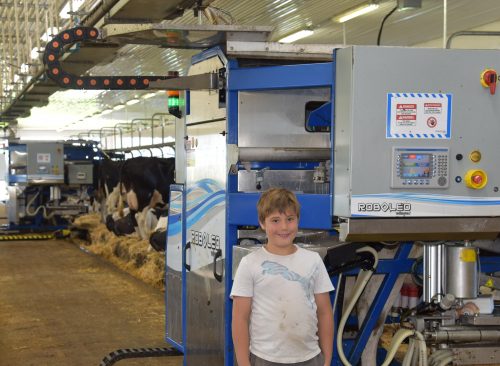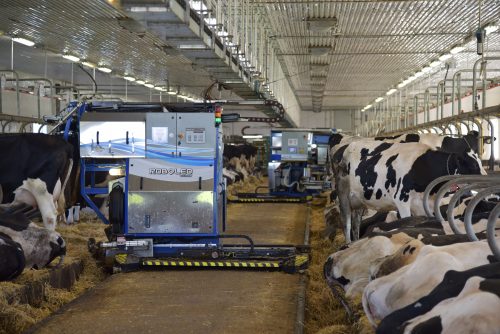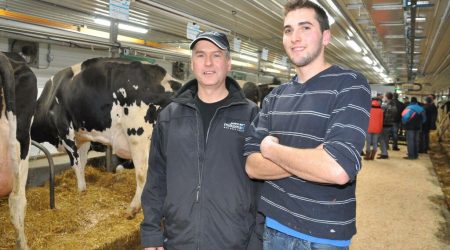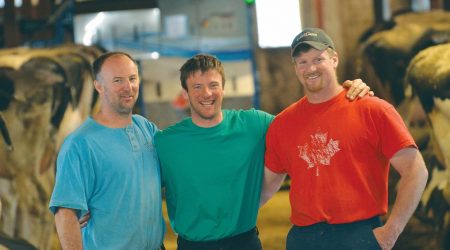Milkomax’ Tie-Stall AMS is the only milking robot for stanchion barns. It can be adapted to your existing building and setup so as to minimize modifications to your barn. Moving from stall to stall, it allows the automation of the milking process while keeping the advantages of tie-stall barns.
How does a Robomax Tie-Stall AMS work?
The Tie-Stall AMS travels in the center aisle between back-to-back stalls and milks each cow one at a time. The robot repeats each step in a predictable and consistent manner, making it easy for cows to get used to the equipment and the process. This reduces the stress inherent to the milking process and results in increased milk production. Milking is done at set times, allowing flexible selection of milkings per day per cow (1, 2, 3 or 4). The AMS operates quietly in the barn so as to keep the herd relaxed throughout the day.
Preparation and Milking Phases
- It travels quietly in the center aisle behind each cow, stopping to identify each stall
- It cleans the AMS’ floor, either before milking each cow or at a frequency set by the operator
- It slowly helps the cow get in position for milking, nudging the cow to back up as needed
- It carefully brushes clean each teat
- It attaches each teat cup using a laser guided system
- It diverts the foremilk and monitors milking per quarter
After milking
- It proceeds with teat dip
- The cow is released so it can return to it’s usual position in the stall
- Teat cups are rinsed clean
- Data regarding each animal’s production and milking is saved and transferred to the management software
- Milk is transferred to the bulk tank while the robot travels to the next stall


AMS capability and herd adaptation
- Efficient: Robot efficiency is maximised since it never waits for cows to come and is not slowed down by cows not ready to be milked.
- Productive: A single robot can reliably perform between 150 and 160 milkings a day, milking frequency being proportional to the herd size.
- Ease of adaptation: It takes between 8 and 10 days for an entire herd, including heifers, to adapt to the robot’s operation.
- Watchful: The AMS monitors the next cow to be milked for positioning. If needed, a device nudges the cow to get it to stand and get in position.


Positive impact on herd health and herd management
- Flexible : Teat cleaning time can be adjusted to ensure the proper preparation time necessary to the release of oxytocin hormones1.
- Precise : The Tie-Stall AMS individually monitors and controls milking of each quarter, virtually eliminating over-milking problems. The robot also generates warnings regarding each quarter’s milk quality.
- User friendly : The AMS’ management software is user friendly to allow a farmer easy management of milking and herd performance. Using a computer, a tablet or a smartphone, you can monitor and even troubleshoot the system remotely. The Tie-Stall AMS is also equipped with cameras that give you live video access to your barn and the robot’s operation.
1 2009-2010 Study of Milk and Milk Production (in French), by Prof. Christian Hanzen, Doctor of veterinary medicine, PH D specialized in cattle health management
Study of Milk and Milk Production

